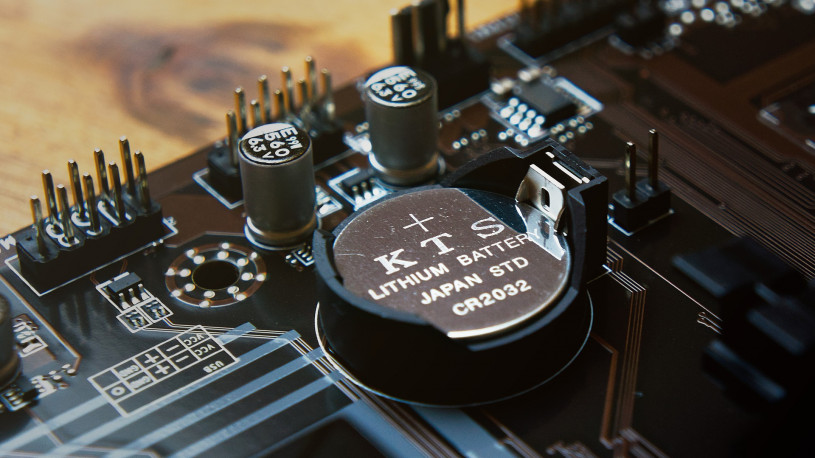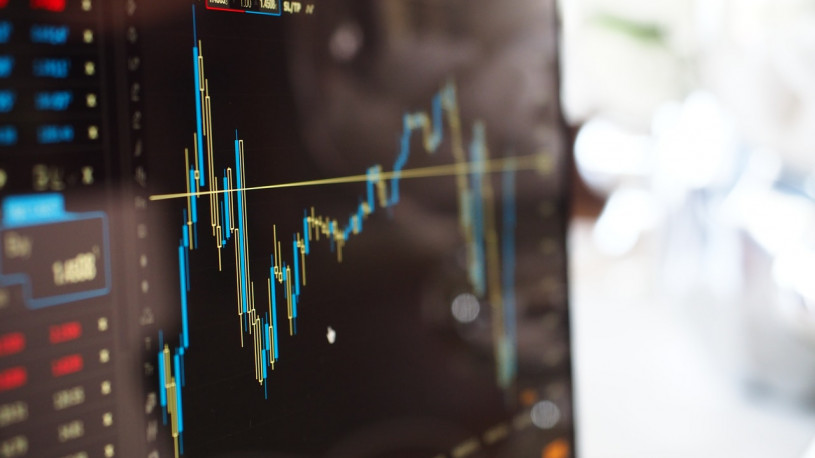-
Recycling of Rare Earths from Electronic Waste
 Continue Reading
Continue ReadingPeople who are ‘in the know’, know that incorporating rare earth elements in electronic components significantly improves their electromagnetic properties. Everybody else, doesn’t know that most household appliances, from the vacuum cleaner to the refrigerator to the many mobile phones that each home has, contain these rare earth minerals.
As their name suggests, they are rare and often difficult to extract, and so are a major goal in the recycling industry.
At present, over 95% of world production of rare earth elements is located in China. A fact that gives cause for concern in many regions, as control of rare earth mineral supply has huge strategic implications given their use not only in household objects, but also in the vital components of computers, nuclear power plants, space programs, military command and missile defence systems, nuclear submarines and the chemical industry.
The Chinese monopoly of production was completed in the last decade of the 20th century, when the United States, as the second largest producer, began to slow down production due to decreasing productivity, rising costs and for environmental reasons. This unbalanced situation lead to China setting quotas and initiating export licenses, that resulted in a trade dispute at the WTO in Geneva. The ensuing brawl and barriers triggered skyrocketing prices, that decreased Chinese exports in the early years of the milenium.
It was hoped that the dispute would have been resolved by the end of 2013, but by then the United States had chosen to renew its mining and production efforts, to bring about a desired reduction in world prices. However by this time, the whole pricing debacle had attracted the attention of scientists and investors in the search for a global strategic solution to sourcing rare earth minerals. One of the solutions found was through efficient recycling.
Until recently, there were two main recycling methods, a pyrometallurgical process which uses high temperatures for separating rare earth elements (lanthanides), and a second method which employs strong acids, and the subsequent use of selective reagents to separate lanthanides that are contained within a given source.
The first method has a very high energy bill, which given rising energy costs negatively affects the economic effeciency of recycling. The second method can have problems with the individual effect of the specific agents used, and also produces a large amount of hazardous waste.
To solve these problems, a new method has been found that is partly based on a process of separation by leaching, followed by the use of hollow fibre membranes in polypropylene that contain microscopic pores for further selection. After leaching, the prototype device uses a series of eight membrane pumps that push the solution to the outer surface of the hollow fibre membrane. At this point researchers found that by introducing an organic solvent containing an extractant, they were able to select lanthanides.
At the start, the extraction solution is immiscible with the feed solution, which the higher pressure within the membrane prevents flowing through the pores. However, since the extractant is in contact with the feed solution where it meets the pores, the lanthanides are passed through and in doing so are sepated from the solution. Subsequently, a stripping acid (oxalic acid solution) is utilised on the surface of the membrane to obtain the lanthanide solution. Researchers then precipitated a mixture of lanthanide oxides from the stripping solution, by way of filtering, drying and calcinating.
Using X-ray diffraction the substance was confirmed to be free of detectable impurities, such as iron and boron, allowing the oxides of lanthanides to be directly reused for some applications without further processing.
Research is ongoing, as the challenge still remains to find a single-step method that will allow the selection of individual element of the lanthanides. For now though, it is known that the system can recover more than 90% of the lanthanide contained in most types of waste; a figure that is comparable to other current methods.
The method is still at a prototype stage, but could generate anywhere from 20 to 30% less chemical waste than conventional extraction techniques. A fact that could have far reaching global implications, not only for the recycling and chemical industries, but for both economic and politically strategic reasons for years to come.
-
Plastics: Recycle or Recreate?
 Continue Reading
Continue ReadingLast week, to great fanfare, Adidas launched a shoe that was made almost entirely from plastic collected and recycled from the ocean. The launch included an announcement from Adidas Group Executive Board Member of Global Brands, Eric Liedtke, who informed an expectant media how “The upper shoe is made entirely of yarns and filaments reclaimed from illegal deep-sea gillnets and other ocean waste, while the base is made from sustainable cushioning material.”
Unfortunately, Adidas has no plans at present to sell the shoe, and it remains a ‘concept shoe’, constructed after a 110 day voyage by the environmental sailors on the vessel Sea Shepherd.
This news came as a surprise for two main reasons. Firstly, that such a thing as a ‘concept shoe’ exists, and secondly that a trainer/sneaker created never to go on sale should become such a newsworthy event.
Any company’s attempt to solve a problem such as ocean waste or increased recycling of plastics is to be applauded, but if the plastic being reused is from a single collection and the sneaker is never to be sold, then isn’t the story more publicity stunt than planet saving action?
Perhaps the media should focus more on a company such as Ecover, a business founded in 1979 based on a product that was a phosphate free washing powder. Today, it produces a whole range of household cleaning products with a view to having less impact on the environment. For example it’s toilet cleaner contains only the following ingredients; water, citric acid, lauryl polyglucose, sodium citrate, xanthan gum, parfum, sodium benzoate, linalook and limonene.
Better still, on the plastics front it is selling a washing up liquid bottle made entirely from recycled plastic, 10% of which is plastic collected from the ocean.
A worthy achievement, but one that still fails to entirely solve the problem of waste plastic in the ocean, as the bottle is just a ‘limited edition’ and the company admits that, “This year, we will be using one tonne of Ocean Plastic and we aim to increase to three tonnes next year.”
One company that does manage to achieve an all year round collection and recycling of raw material from ocean debris is Method. They also make soap, and sell it in bottles that are made from plastics sourced from the ocean.
To do this, as Forbes magazine reports, “The company has partnered with Sustainable Coastlines Hawaii and the Kōkua Hawaii Foundation to hand-pick more than a ton of plastic from local beaches.” The business model for this, as CEO and co-founder Adam Lowry explains is that they have “created a crowd source model for collecting plastic”.
This volunteer support needs training, as only some of the debris on the beach can be reclaimed, and even then the search for waste is focused on beaches where there is a high level of the polypropylene and high density polyethylene needed.
Even with this volunteer support, Lowry explains, Method still faces numerous problems to make its recycled plastics sourcing viable. “The material is not only difficult to collect, it’s also degraded, brittle, and hard to recycle.” This means that in the end, to create a quality plastic, it has to be mixed with other recycled plastic sources.
Given that as the Wall Street Journal reports, as much as “8.8 million metric tons of plastic waste are dumped in the world’s oceans each year.” then the efforts of Adidas, Method and Ecover begin to seem rather insignificant.
So given that recycling plastic from the ocean is so difficult, shouldn’t we be focusing on a different approach?
Lego, the Denmark-based makers of plastic toy bricks for the last 66 years, has decided to clean up its use of raw materials by promising to introduce “sustainable raw materials” to replace the petrochemical-based polymers it currently uses. This it hopes to achieve by the year 2030 at a cost of $150 million.
At present, according to Lego chemical engineers, ”the key raw material for the blocks is acrylonitrile-butadiene-styrene (ABS), a copolymer of styrene and acrylonitrile synthesized in the presence of polybutadiene rubber”
This product is supplied by a firm called Styrolution, a spokesman from which explained to the American Chemical Society the problems Lego is facing, and why the change will take so long, and so much money.
“The building-block raw material has to be made to an exact specification so that the blocks lock together and then come apart with just the right amount of force. It is not your run-of-the-mill ABS.”
When, and if, Lego find their solution, it is certain not to be a perfect answer, as even oil free plastics have their problems. Bioplastics began to be developed and commercially tested in the 1950’s and are now used in countless products. But as world population soars and food prices rise, setting aside thousands of acres of land to grow plant to make into plastics is becoming less and less viable.
Maybe, that problem has now also been solved as a group of researchers at the Institute of Chemical and Bioengineering at the university ETH Zurich, have found a new way to make the PLA (polylactic acid) used in many bioplastics.
This new method uses glycerol, a waste product of biofuel production, and so saves energy and produces 20% less carbon dioxide than traditional production methods.
The method is explained further in the Smithsonian Magazine, which explains that, “Rather than using fermentation to create PLA, as is commonly done, the researchers teamed up with scientists from the university’s Advanced Catalysis Engineering group to create a custom catalyst. Made from a microporous mineral, the catalyst’s structure specifically promotes the desired chemical process.”
The end product still has its disadvantages, as it does not perform well when hot, so cannot replace plastics used in the microwave or in coffee cups, and it is of course, years away from being commercially produced.
But with developments like this, one can begin to wonder if we are on the cusp of new wave of sustainable plastics. For now it seems that there is no single solution to the amount of plastic-based waste that we produce, instead, it seems a combination of recycling and recreating may be the answer. With the initial, albeit small steps into reclaiming ocean plastic, mixed with investment from big businesses into sustainable plastics, and further developments and research into bioplastics, we may be on our way to maintaining a healthy industry and more importantly, a healthy planet.
-
Will the Way we Trade Chemicals ever Change?
 Continue Reading
Continue ReadingBack in the day, buying chemicals meant making contacts among traders, manufacturers and suppliers. It was a very sociable act and generally involved a game of golf, perhaps a gin and tonic before lunch and then business. But who has time today, to spend five hours on the golf course and then two hours for lunch at the weekend, let alone on a week day?
So a new routine of business has developed, one that feels a lot faster, but isn’t necessarily any more effective or efficient. Nowadays, a chemicals trader has to spend the first hour or two of each morning wading through a mass of emails, before he or she can even begin to do some work. And when work does begin, what does it entail? Option 1: Picking up the phone or writing more emails asking for price quotes from the same old suppliers.
Option 2: Those who are more daring (or who have been in the business less time and so have fewer contacts) reach for the chemicals directory, in the hope of finding some new gem of a supplier.
The first option is conservative and reliable, and means that you will receive chemicals from trusted sources. It is a tried and tested route from people who you know (maybe even have met) and restricts the possibility of losing money to a dishonest businessman.
The second option requires some serious email writing or phone calling to persons unknown. The price might be better, and the conditions of sale more favourable, but you are left wondering if it is worth the risk. What is the value of a good night’s sleep against the fear of a deal going wrong with someone you haven’t met from the other side of the world, who you found out about from an advert in a magazine or (riskier still) an online banner ad? Better surely, to stick with who and what you know.
But even if you play it safe, there is the legwork required to process any order that has verbally or via email been agreed upon. This means obtaining authorisations and PO numbers, ordering items, notifying the accounts department and arranging for wire transfers.
There must be a better way.
There are many chemicals traders who yearn for a simpler way to do business, and many executives who yearn for a cheaper way. In today’s high-tech age where we even connect with our friends through a portal like facebook, it seems a simple, yet logical step to use the Internet.
We all know the power of the www. According to a recent Forbes magazine headline, “the B2B e-commerce market will be worth $6.7 Trillion by 2020″ with Alibaba (a business just 16 years old, making $27 billion of that business).
The rapid and exponential growth of a business like Alibaba is fascinating, as it shows the great advantages that can be had when using e-commerce, and must make every company ask whether it can survive today if it doesn’t use online trading.
More experienced readers may remember that it has been tried before. As Tony Ridnell, founder of TRInternational, Inc and member of the Board of Directors of America’s National Association of Chemical Distributors recalls, “At the millenium, there were in fact three dozen or so chemical exchanges that were destined to cause the end of the traditional model of chemical selling.”
So what did companies like ChemConnect, e-Chemical, and Elemica do wrong?
Maybe the market wasn’t ready. Maybe the remoteness of online trading was too scary back then. However, those three firms still exist (in one shape or another), although not the game-changers they were thought to be, they do still help chemicals traders do business, either by connecting clients or assisting with chemicals logistics.
Today, we are all much more confident at making personal purchases online, and businesses like Paypal and online banks have increased security measures greatly, such that buying from the Internet is now largely a stress and hassle free process.
Certainly one fear from online chemicals trading has been eliminated; the fear of doing business with dishonest traders. Whilst this can never be entirely eradicated, it is possible to establish an online service for users who have been verified as trustworthy and bona fide by financial ratings agencies. Such a service exists at Spotchemi.eu (who support this blog). They use agencies such as COFACE and Bisnode to vet companies before they can access the Spotchemi chemical trading portal.
Maybe a development like this means that we are on the cusp of changing the way chemicals are traded. But as it stands, it is one of the Internet’s strangest anomalies that the chemicals industry, whilst existing on cutting edge research and which employs highly technical staff and knowledgeable salesmen has not yet taken the leap towards online trading.
Every day we hear more and more about the power (both good and bad) of the web, and how the ‘Internet of Things’ will influence every part of our everyday lives. Maybe this is a blessing, maybe it is a curse.
As you read this blog, sent out across the electronic ether you may be bracing yourself for new ways to do business or maybe rushing with open arms towards the end of cold calling, email answering and overlong chemical conferences held in cities far from home. Of course you may just be hoping for the return of the golf course deal and the gin and tonic negotiations.
But the chemicals industry needs an online trading service. With chemicals’ markets and sources often continents apart it is such a natural step for online trading to take off. And when it does it would be for the benefit of all concerned.
